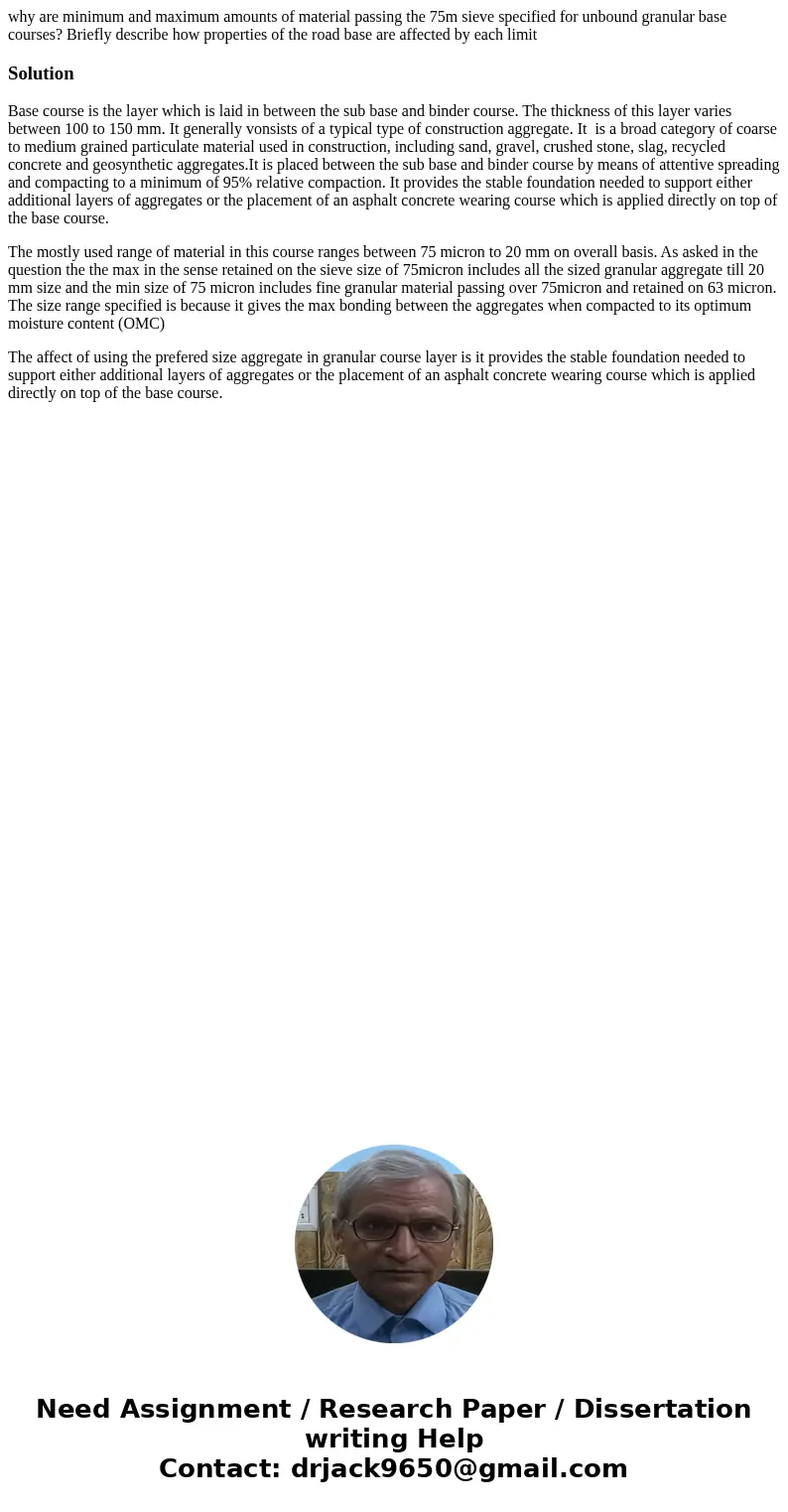why are minimum and maximum amounts of material passing the
Solution
Base course is the layer which is laid in between the sub base and binder course. The thickness of this layer varies between 100 to 150 mm. It generally vonsists of a typical type of construction aggregate. It is a broad category of coarse to medium grained particulate material used in construction, including sand, gravel, crushed stone, slag, recycled concrete and geosynthetic aggregates.It is placed between the sub base and binder course by means of attentive spreading and compacting to a minimum of 95% relative compaction. It provides the stable foundation needed to support either additional layers of aggregates or the placement of an asphalt concrete wearing course which is applied directly on top of the base course.
The mostly used range of material in this course ranges between 75 micron to 20 mm on overall basis. As asked in the question the the max in the sense retained on the sieve size of 75micron includes all the sized granular aggregate till 20 mm size and the min size of 75 micron includes fine granular material passing over 75micron and retained on 63 micron. The size range specified is because it gives the max bonding between the aggregates when compacted to its optimum moisture content (OMC)
The affect of using the prefered size aggregate in granular course layer is it provides the stable foundation needed to support either additional layers of aggregates or the placement of an asphalt concrete wearing course which is applied directly on top of the base course.

 Homework Sourse
Homework Sourse